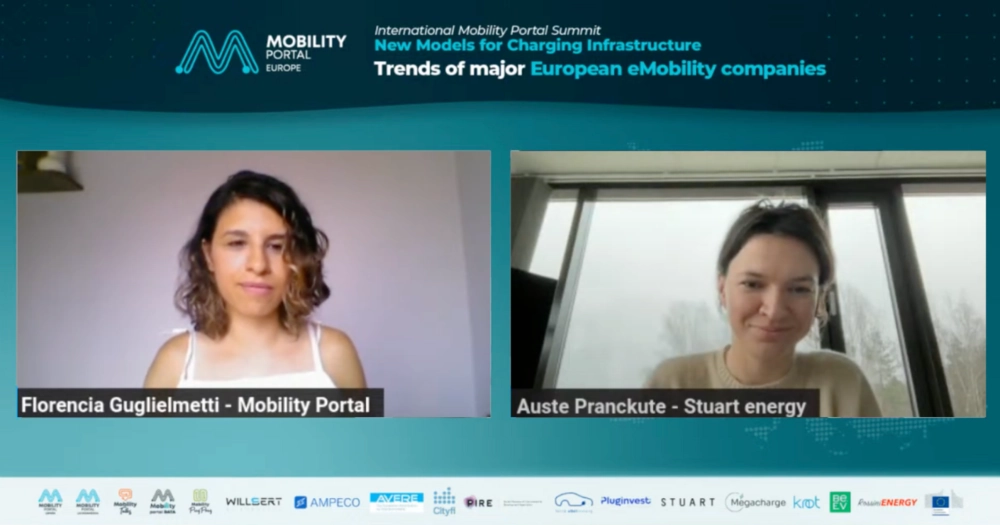Currently, Lithuania is significantly accelerating its transition towards eMobility, increasing electric vehicle (EV) registrations, and expanding the charging point network.
However, this progress could be hindered by a deficit in user experience.
Auste Pranckute, Co-founder at Stuart Energy, tells Mobility Portal Europe that the market has numerous mobile applications that people must download to pay for charging.

One proposed solution to solve this is the integration of payment tools at the stations, allowing users to make payments directly onsite without the need for app downloads.
“Nevertheless, having the devices installed in the charging points increases the Capital Expenditures (CAPEX) and Operational Expenditures (OPEX) of the charging infrastructure,” she notes.
Additionally, the devices could be faulty or insecure.
“From the end-user perspective, it might be a bit more convenient than having 101 downloaded mobile apps, but from the infrastructure perspective, it is not as convenient,” she emphasizes.
Despite these challenges, Lithuania demonstrates active commitment to transitioning to electric mobility to meet both local and European Union-established objectives.
According to the Ministry of Transport, the number of eCars in the country has seen an average increase of 500 each month in 2023.
This sets Lithuania apart from other Baltic countries with the largest fleet of electric vehicles.
In 2023, newly registered electric and plug-in hybrid automobiles constituted over seven per cent of the total new registrations.
According to data from the state-owned company Regitra, as of February 1, 2024, there were over 12,100 light EVs registered.
Electrification in the transportation sector will continue to expand throughout this year.
It is projected that in 2024, EV sales will maintain sustained growth, increasing between 50 and 70 per cent compared to 2023 levels.
This forecast underscores the urgent need to pay greater attention to the development of charging infrastructure to accompany this rise.
Currently, Lithuania already has over 1,300 operational public and semi-public points, a figure that has increase 3.5 times since 2021.
“It is experiencing notable growth in terms of the number of chargers for electric vehicles,” Pranckute states.
It is expected that by 2030, this number will multiply at least sevenfold.
According to the Ministry of Energy of Lithuania, more than 85,000 stations should be operational in the next eight years.
This constant growth in the eMobility market reflects the effectiveness of measures and incentives implemented to drive this transition.
“We have a subsidy that exempts companies from paying taxes when acquiring passenger cars valued up to 50,000 euros,” she details.
They also have assistance aimed at expanding both public and private alternating and direct current charging networks, catering to end-users and businesses.
“I believe this constitutes the main driving motivation for the EV charging point operators’ (CPOs) business,” she emphasizes.
It is important to note that public charging networks are expanding beyond metropolitan areas, also covering smaller cities.
However, challenges begin to emerge at this point.
Its rapid development is threatened by the limited capacities of the electrical grid.
Currently, the existing grid cannot meet the energy demand required for dozens of charging points.
“The development of infrastructure is a process that involves significant investment, and projects involving the construction of new power sources or the modernization of the existing electrical grid can take from six months to a year,” she points out.
Key challenges to consider include the availability of network connectivity and, in some cases, “legal procedures that demand a considerable amount of time.”
The lack of suitable locations near the country’s main roads is also highlighted.
How does Stuart Energy ensure an efficient charging process?
The company is addressing these challenges on two fronts.

One involves tackling the issue of network connectivity.
In this regard, they are working to address the network connectivity issue through comprehensive load-balancing solutions.
They are also exploring options to integrate storage systems that support the growth of connection capacities.
On the other hand, they are focused on ensuring charging uptime throughout the year.
To achieve this, they are implementing a parts service tool that helps technicians resolve issues more quickly, thereby increasing the availability of points.
Stuart Energy primarily focuses on small and medium-sized enterprises, collaborating not only with CPOs but also with charging point integrators.
“Our goal is to contribute to expanding the network with the least possible cost and ensuring charging availability,” Auste Pranckute emphasizes.
Following is the participation of Auste Pranckute, Co-founder at Stuart Energy, during the “International Mobility Portal Summit”:








